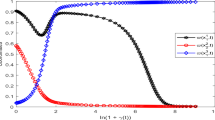Abstract
Several authors have proposed mechanisms whose Nash-equilibria yield Lindahl tax allocations; however, as is well known, so does the Lindahl procedure with an auctioneer. Moreover, the game forms of all these mechanisms, and of any as yet undiscovered such mechanism, all have the same normal form as does the Lindahl procedure without an auctioneer. The manipulative Nash equilibria are consequently the same for all these mechanisms, so that all have the traditional free-rider problem and all have the same outcome under strategic behavior.
Similar content being viewed by others
References
Bagnoli, M. and Lipman, B.L. (1992). Private provision of public goods can be efficient.Public Choice 74(1): 59–78.
Foley, D. (1970). Lindahl's solution and the core of an economy with public goods.Econometrica 38: 66–72.
Groves, T. (1970). Efficient collective choice when compensation is possible.Review of Economic Studies 46: 227–241.
Hammond, P.J. (1979). Straightforward individual incentive compatibility in large economies.Review of Economic Studies 46: 263–282.
Hurwicz, L. (1979). Outcome functions yielding Walrasian and Lindahl allocations at Nash equilibrium points.Review of Economic Studies 46: 217–225.
Hurwicz, L. (1972). On informationally decentralized systems. In C. McGuire and R. Radner (Eds.),Decision and Organization. Amsterdam: North-Holland.
Hurwicz, L. (1985). A perspective. In L. Hurwicz, D. Schmeidler and H. Sonnenschein (Eds.),Social goals and social organization. New York: Cambridge University Press.
Muench, T. and M. Walker (1979). Identifying the free rider problem. In J.-J. Laffont (Ed.),Aggregation and revelation of preferences. New York: North Holland.
Roberts, J. (1976). The incentives for correct revelation of preferences and the number of consumers.Journal of Public Economics 6: 359–374.
Tian, G. (1989). Implementation of the Lindahl correspondence by a single-valued, feasible, and continuous mechanism.Review of Economic Studies 56: 613–621.
Walker, M. (1981). A simple incentive compatible scheme for attaining Lindahl allocations.Econometria 49: 65–71.
Author information
Authors and Affiliations
Rights and permissions
About this article
Cite this article
Bailey, M.J. Lindahl mechanisms and free riders. Public Choice 80, 35–39 (1994). https://doi.org/10.1007/BF01047945
Accepted:
Issue Date:
DOI: https://doi.org/10.1007/BF01047945




